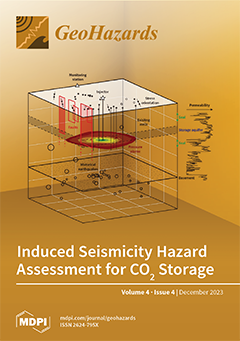Wildfires affect and change the burned sites’ condition, functionality, and ecosystem services. Altered hydrologic processes, such as runoff, increased streamflows, and sediment transport, are only a few examples resulting from burned soils, vegetation, and land cover. Such areas are flood-prone and face risks
[...] Read more.
Wildfires affect and change the burned sites’ condition, functionality, and ecosystem services. Altered hydrologic processes, such as runoff, increased streamflows, and sediment transport, are only a few examples resulting from burned soils, vegetation, and land cover. Such areas are flood-prone and face risks of extreme peak flows, reduced infiltration, water pollution affecting habitats, and hydromorphological changes. In this study, we present the different post-fire erosion and flood protection treatments that have been developed to avoid and mitigate the consequences and risks mentioned above. We categorize them into Land, Channel, Barrier, and Road treatments and analyze their types, such as cover-based methods, barriers, mulching, in-channel treatments, such as check dams, seeding, or even chemical treatments. Examples of how such treatments were used in real cases are provided, commenting on their results in flood and erosion protection. We found that cover changes were more effective than barriers, as they provided an immediate ground-cover increase in both Mediterranean and US sites. We explore the factors that play a role in their effectiveness, including storm duration and intensity, topography and slopes, land cover and uses, treatment implementation-installation, as well as fire-related factors such as burn severity. These factors have different effects on different treatments, so we further discuss the suitability of each one depending on the site’s and treatment’s characteristics. The outcomes of this work are expected to improve the understanding of the practical aspects of these treatments, providing for the first time a synthesis of the available knowledge on the multiple complex factors that can determine their efficiency.
Full article





